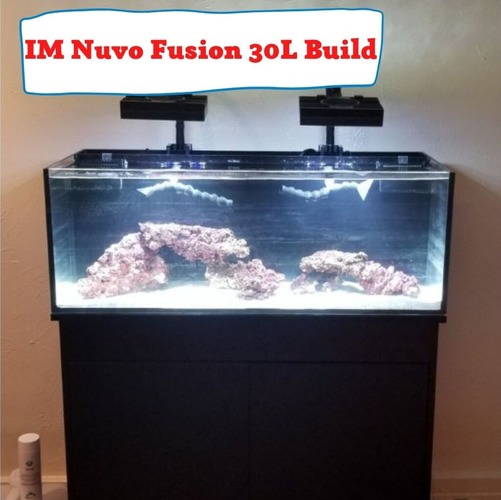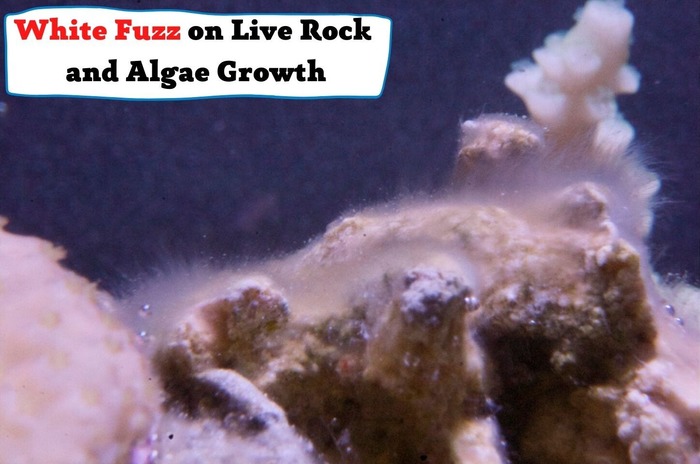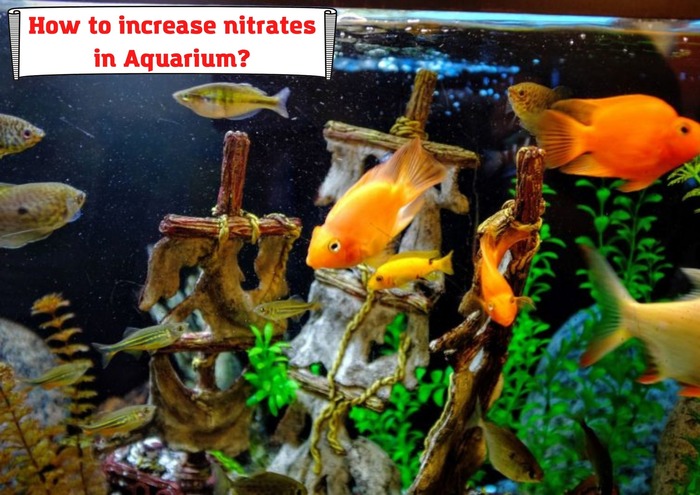
We understand that maintaining an optimal tank is challenging. You have to be in a constant struggle to maintain an optimal level of nutrients. A few of you might be happy to lower the ammonia and thus the nitrate levels in your tank. Unfortunately, this isn’t something you can be happy about if you have plants in your aquarium too.
Plants need nitrate to grow and prosper, so you must maintain healthy levels of nitrates in your tank. In this article, we’ll cover:
- Need for the nitrates in your tank
- How do nitrates hit the bottom level?
- How can you increase nitrates?
- Ways to create the good balance
Why do you need nitrates in your aquarium?
Well, as discussed, nitrates are essential for the growth of the plants in your aquarium. Not providing those with enough nitrates means that your plants will die. So, there is no option you have here other than maintaining a balance that can keep your fish and your plants happy.
If your tank does not have plants, you don’t have to worry about increasing them because your fish can be happy with the lowest possible nitrates level.
What is the optimal nitrate level?
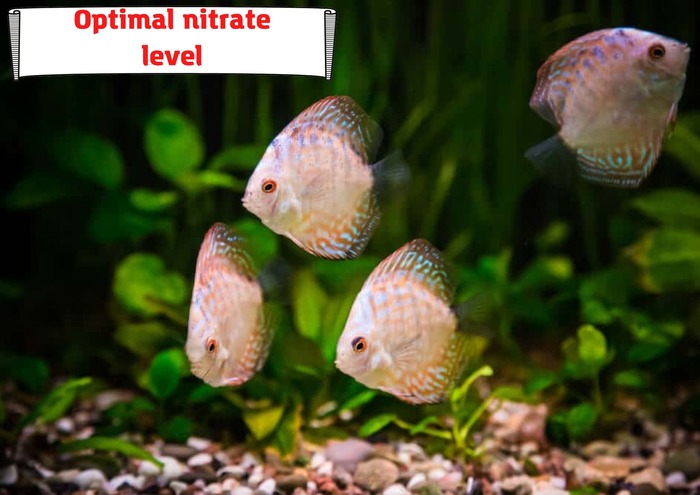
Before we can start discussing ways to increase the nitrate levels, it is essential to discuss the optimal amount of nitrates that you must maintain in a tank to keep your plants and fish happy.
So, the presence of nitrates anywhere below 50 ppm will work for your fish. So, taking this as an upper limit, the more nitrates you can add to your aquarium, the higher benefits your plant can get from this setting. Be careful not to go beyond this level, as it can create a shock for your fish and be excessively harmful to their health.
You must always perform water quality tests, so you are sure about the existing condition of your tank and its aptness for your plants and fish.
One of the other factors that can be helpful here is the population of the plants and fish in your aquarium. If there are too many fish with a few plants, the nitrate level in your tank will be high, and you’ll need to manage it actively. However, if it is the opposite, i.e., more plants less fish, the Aquarium will be lower in the number of nitrates, and you’ll have to introduce it into the tank artificially.
How can you increase the nitrates level?
So, have the water parameters shown a lower level of nitrates in your aquarium? You’ll have to add more of it. Below are a few methods to include more nitrates in your tank.
Potassium nitrate fertilizer
You can increase the nitrates level in your tank by adding the potassium nitrate fertilizer. This fertilizer can increase the level of potassium and nitrates in the aquarium, ensuring a healthy environment for your plants to grow. It can specifically increase the chlorophyll in the plants, thus helping them in photosynthesis.
Add Flourish Nitrogen
Another solution to increase the nitrates in your aquarium is to add Flourish nitrogen. This chemical must be added according to the measurements prescribed on the pack. Besides, your existing nitrate levels in the tank must also be considered before deciding upon a particular quantity.
Using tap water
In some areas, you can also find nitrates in the tap water. So if they are lesser in quantity in your tank, you might want to add simple tap water during the water changes, which can automatically improve the nitrates level. However, this method requires a lot of understanding of the water parameters. The tap water might also have chlorine, calcium, and other minerals, which might not suit your fish and plants. So, be very careful when utilizing this technique to increase the nitrate level in your tank.
Reduce the filtration efficiency
Another way to increase the nitrates level is to reduce your filtration efficiency. The lesser your filtration system will work, the less nitrates will it take out from your tank, thus making your nitrates reach a level where you can get the most benefit out of it.
Feed your fish more
One of the natural ways to get more nitrates in your Aquarium is to increase the organic waste. The easiest way of doing so is feeding your fish extra, so there will be waste material at the end; the higher waste means more ammonia and thus more nitrates. But we will suggest you adopt this strategy in the cyclic phase. It means that do not overfeed your fish continuously as it will disrupt the entire nutrient level in your aquarium. Overfeeding off and on might help you maintain the optimal level of nitrates.
Do not use a scrubber
If you have algae in your tank, don’t bother to scrub. Scrubbing will reduce any chance of excessive nutrient availability. So, let it stay for a few weeks and see if it helps increase the nitrates level in your tank.
How to balance the nitrate level?
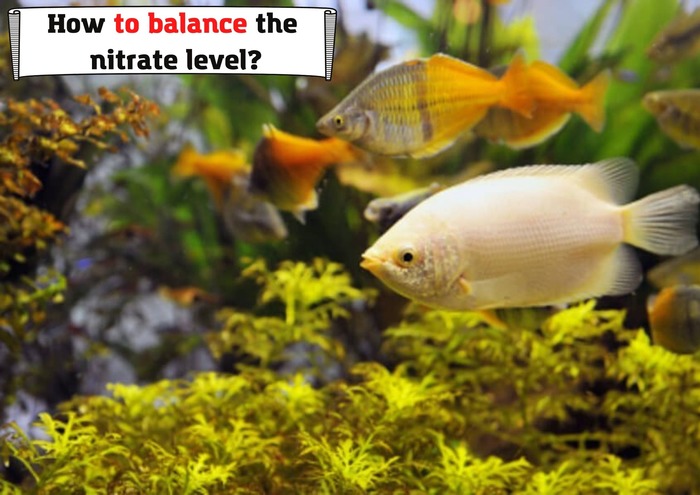
You might want to increase your nitrates level at the current situation in which your tank is in, but rapidly increasing the level is not the solution here. You have to maintain the optimal level to be sustainable in the long run.
Below are the main ways to balance the nitrates level in your Aquarium. You can follow these methods, so you don’t have to worry about your plants or fish.
Find a fit between the fish and plants
As fish produce wastes, which result in the formation of nitrates, plants consume them. So, you have to create a balance between the fish and plants in your aquarium. This can be done by trial and error. You can check the current level of nitrates in your water. If they are more than 50 ppm, you’ll need to introduce more plants (if the space allows). So, the nitrates level can be in control.
Similarly, if there are lesser nitrates in your tank, you should introduce more fish. But you cannot find a lot of new species in your tank rapidly. Make sure to take enough time to let the previous species adjust to the aquarium.
Manage food waste
You should take steps to manage food waste if you feel that your nitrates levels are already excessive. Reducing the overfeeding trends can ensure there is lesser waste in the water, which means lesser ammonia and, thus, lower levels of nitrates. However, if the nitrates are lower, then you might feed your fish as much as you like.
Close monitoring
Before you can even opt to take any nitrate management step, you must closely monitor the water quality. If the nitrates are already low, you can delay the water changes a bit longer and vice versa.
Summing up
Just like the higher nitrates level, the lower labels can be a problem because they can result in the death of your plants. You might not even want any nitrates if you don’t have plants in your aquarium. So, it is important to maintain an optimal fit between your plants and fish. It can help in maintaining the nitrates level most efficiently. However, by the time you reach this level, you can adopt the steps mentioned above to increase your nitrate levels.
A disclaimer here is that you should never rely on your instincts to increase the nitrates in your tank because they can negatively impact the fish. Always check the water parameters before taking any step to enhance the nitrates in your aquarium.
- Pleco Not Eating. Main Reasons Your Pleco Is Starving - February 21, 2022
- Foxface Fish Sting: Any Danger? And What To Do To Relieve Pain? - February 20, 2022
- White Stuff Coming Out Of Snail – Dangerous? Should You Worry About It? - February 19, 2022


